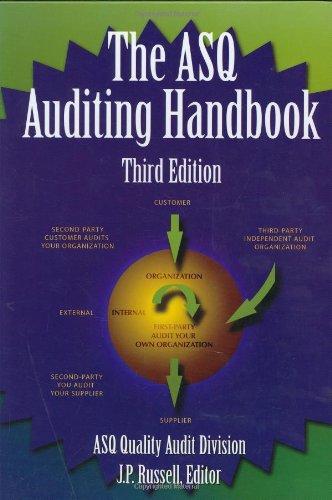| $1,228,800 4) | A company must repay the bank $40,000 cash in 4 years for a loan it entered into. The loan is at 10% interest compounded annually. The present value factor for 4 years at 10% is 0.6830. The present value of the loan is: | | $40,000. | | $12,680. | | $16,000. | | $67,320. | | $27,320. 6)A company issued 15-year, 4% bonds with a par value of $300,000. The market rate when the bonds were issued was 3.5%. The company received $301,629 cash for the bonds. Using the straight-line method, the amount of recorded interest expense for the first semiannual interest period is: | $5,945.70. | | $6,000.00. | | $12,000.00. | | $6,054.30. | | $11,945.70. 7) On October 1, a $60,000, 6%, 3-year installment note payable is issued by a company. The note requires that $20,000 of principal plus accrued interest be paid at the end of each year on September 30. The issuer's journal entry to record the second annual interest payment would include: | A credit to Cash for $20,000. | | A debit to Interest Expense for $3,600. | | A debit to Interest Expense for $2,400. | | A credit to Cash for $23,600. | | A debit to Notes Payable for $2,400. 8) A company issued 7%, 4-year bonds with a par value of $300,000. The market rate when the bonds were issued was 7.5%. The company received $291,000 cash for the bonds. Using the effective interest method, the amount of interest expense for the first semiannual interest period is(rounded): | $10,500.00. | | $10,912.50. | | $21,825.00. | | $12,000.00. | | $11,437.50. 10) On January 1, 2010, Jacob issues $860,000 of 9%, 13-year bonds at a price of 94.5. All interest is accounted for and paid through December 31, 2015, the day before the purchase. The straight-line method is used to amortize any bond discount. What is the carrying value of the bond on January 1, 2016? | $812,700 | | $902,672 | | $834,528 | | $838,172 | | $860,000 11) A company issues at par 4% bonds with a par value of $600,000 on April 1, which is 4 months after the most recent interest date. How much total cash interest is received on April 1 by the bond issuer? | $12,000. | | $8,000. | | $24,000. | | $4,000. | | $16,000. 12) | On January 1, 2010, Jacob issues $990,000 of 8%, 12-year bonds at a price of 98.5. All interest is accounted for and paid through December 31, 2015, the day before the purchase. The straight-line method is used to amortize any bond discount. What is the total interest expense for the life of the bond? | | $950,400 | | $965,250 | | $964,250 | | $975,150 | | $1,054,350 13) On January 1, 2010, Lane issues $800,000 of 8%, 20-year bonds at a price of 109.75. The interest payments are made on June 30 and December 31. Lane elects a fiscal year ending September 30. What is the amount that would be recorded as Interest Expense in the December 31, 2010 journal entry? | $32,000 | | $30,050 | | $16,000 | | $15,025 | | $17,455 14) On May 1, 2010, Jared Enterprises issues bonds dated January 1, 2010, that have a $2,630,000 par value, mature in 10 years, and pay 6% interest semiannually on June 30 and December 31. The bonds are sold at par plus four months' accrued interest. What is the total amount of cash Jared Enterprises will collect on May 1, 2010? | $2,787,800 | | $2,630,000 | | $2,682,600 | | $2,804,333 | | $2,708,900 17) A corporation issued 5,000 shares of its $10 par value common stock in exchange for land that has a market value of $84,000. The entry to record this transaction would include: | A credit to Land for $50,000. | | A debit to Common Stock for $50,000. | | A credit to Common Stock for $84,000. | | A credit to Paid-in Capital in Excess of Par Value, Common Stock for $34,000. | | A debit to Land for $50,000. 18) XtremeSports has $100,000 of 9% noncumulative, nonparticipating, preferred stock outstanding. Xtreme Sports also has $50,000 of common stock outstanding. In the company's first year of operation, no dividends were paid. During the second year, Xtreme Sports paid cash dividends of $55,000. This dividend should be distributed as follows: | $9,000 preferred; $46,000 common. | | $27,500 preferred; $27,500 common. | | $18,000 preferred; $37,000 common. | | $8,500 preferred; $46,500 common. | | $0 preferred; $55,000 common. 20) Nelson Company had net income of $30,000. On January 1, the number of shares of common stock outstanding was 9,000. On April 1, the company issued an additional 3,000 shares of common stock. There were no other stock transactions. The company's earnings per share is (rounded): | $.40 | | $3.33 | | $2.67 | | $2.50 | | $10.00 | | | | | | | | | | | | |






